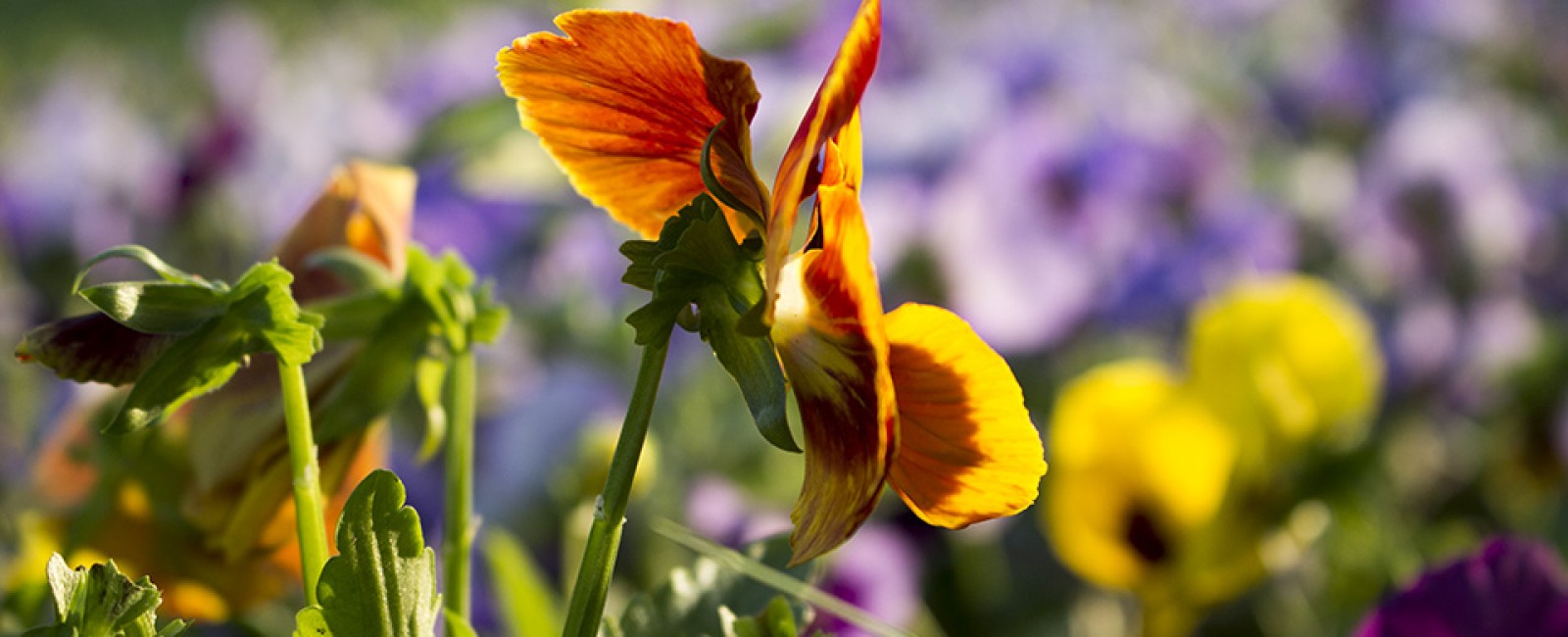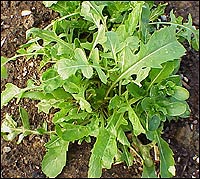|
Annual Culinary, Ornamental 3 feet high, 1 foot wide Full sun to partial shade Prefers rich, moist soil |
Arugula, Roquette, Eruca vesiceria sub, sativaA member of the mustard family, arugula is also known in France as roquette. It is one of the choicest Southwest-style salad greens to grow and eat. The young tender leaves of arugula in salads and cold dishes are something to be experienced. When young, leaves have a crispy, crunchy texture combined with a nutty-peppery taste, which some describe as garliclike. Fully grown, its ruffly green are similar to oak leaf lettuce or radish leaves, only darker, reaching to 3 feet high. |
Planting & Care.
Like lettuce, spinach and chard, arugula grows best as a cool weather crop. Plant from seed or transplants in Spring or Fall. Arugula germinates similarly to radishes, in thoroughly moist, cool soil, usually within a few days. It thrives in a rich, moist, well-drained soil with full-sun or some shade. Tolerates mild freezes. Warm temperatures cause arugula to go to seed quickly. It reseeds readily so expect to see it again.
Harvesting and Use.
Harvest young tender leaves as often as possible to maintain a regular supply before the onset of hot days. The longer the leaves are on the plant, the stronger their taste.
As the season progresses older leaves become inedible and tough, acquiring a bitter, fiery taste along with a faintly skunky aroma. At this point the plant bursts into clusters of small, four-petaled, creamy white flowers, penciled with deep, brown-red veins. They make a lovely filler for bouquets or as a garnish for salads and soups.
Culinary Use.
The key to enjoying arugula is to use it in moderation. Mix with other salad greens such as red leaf, bib, or Boston Lettuce, radicchio or endive. Make a special spinach salad by tossing spinach and arugula leaves, crisp bacon pieces, slices of hard boiled eggs, red pepper slices and garlic croutons with your favorite dressing. Add a few arugula leaves with lettuce to spice up sandwiches.


